How DigitalXForce Helps

DigitalX Profiling & Integration
Employ automated and manual scanning procedures and techniques to recognize and evaluate digital assets and tools.- Attack Surface Management & Asset Inventory
- What is Attack Surface Management & Asset Inventory?
- How DigitalXForce Executes
DigitalXForce provides AUTOMATED, CONTINUOUS, REAL TIME Security Risk Management through Digital Asset & Attack Surface Inventory, Security Tool Integration, Regulatory Controls Mapping, Risk Quantification & Prioritization, & Remediation with End-to-End Visibility, Governance, Analytics & Reporting and Security Blueprint.
Attack Surface Management (ASM) and Asset Inventory are crucial practices that help organizations protect their IT infrastructure from cyber threats. ASM involves identifying and reducing potential entry points for attackers by examining hardware, software, and network configurations. Asset Inventory engages in keeping track of all IT assets to identify vulnerabilities. Organizations can ensure better protection against potential cyber threats by conducting both practices.
- Identify the regulatory requirements to understand the terms of compliance
- Assess current compliance status by reviewing policies and procedures, conducting risk assessments, and identifying any gaps
- Develop and implement a plan to remediate compliance gaps
- Prepare for the audit by gathering evidence of compliance, preparing documentation, and scheduling the audit
- Lend support to the auditors during the audit
- Follow-up post the audit to address findings and recommendations
Integrate security tools with DigitalX to maintain strong security posture
Maintain a strong security posture and reduce the risk of cyber attacks by consolidating security information into a single interface. Security tool integration involves integrating various security technologies such as firewalls, anti-virus software, vulnerability scanners, intrusion detection and prevention systems, and SIEMs to provide a comprehensive security approach for an organization.
- Integrate different security tools to enhance threat detection capabilities, enabling faster and more precise identification of potential threats and vulnerabilities.
- Security tool integration enables streamlined incident response, allowing security teams to react swiftly to security incidents through a unified interface for monitoring and responding to alerts.
- Consolidate security information into a single interface to reduce its complexity.
- Security tool integration saves costs by reducing the need to purchase and maintain multiple security tools.
DigitalX Risk Analysis & Prioritization
Quantify Digital Risk and create prioritization strategy based on severity, risk, and threat intelligence- Real time and Continuous Control Analysis
- What is Real time and Continuous Control Analysis?
- How DigitalXForce Executes
Get continuous real-time protection from security threats with DigitalX
The combination of real-time and continuous analysis provides a comprehensive approach to cybersecurity that improves the overall security posture and reduces the risk of cyberattacks. Real-time analysis involves monitoring network traffic, system logs, and security events to detect and respond to incidents and potential threats quickly. Continuous analysis involves regular monitoring of security controls to identify and remediate vulnerabilities and ensure compliance.
- Measuring system performance for real-time control analysis
- Collecting data on system performance
- Identifying problems or anomalies
- Analyzing system performance data to identify trends or patterns
- Making adjustments to improve system performance
- Risk Quantification & Prioritization
- What is Risk Quantification & Prioritization?
- How DigitalXForce Executes
Evaluate potential risks and develop a strategy to allocate resources effectively with DigitalX
Risk quantification and prioritization involve evaluating potential risks, assigning a numerical value to prioritize them based on severity, and optimizing resources to address the most critical risks first, reducing the risk of cyber-attacks and other security incidents.
- Improve risk management by quantifying and prioritizing risks to manage the risk exposure and allocate resources to address the most critical threats
- Better decision-making with data and insights to make informed decisions
- Increased accountability for addressing the most critical risks
- Resource optimization by prioritizing risks to allocate resources effectively, ensuring that resources are directed towards the most critical threats.
- Compliance with industry standards and regulations.
- Compliance with Security Posture Management
- What is Compliance with Security Posture Management?
- How DigitalXForce Executes
Effective security posture management with DigitalX by establishing and overseeing security controls, policies, and procedures
- Conduct periodic vulnerability assessments
- Establish incident response plans
- Implement multi-factor authentication
- Monitor user behavior
- Engage with third-party providers
DigitalX Integrated Risk Management & Remediation
Integrate with Security Management tools and processes for timely and controlled fashion, mitigate and/or create controls to monitor exceptionsStrategically prioritize corrective efforts with DigitalX to address critical security risks
Risk remediation planning addresses identified risks in the IT infrastructure of an organization. It involves developing a comprehensive plan to implement controls and mitigation measures, enhancing the security posture and reducing risk exposure.
- Identify and prioritize the most critical risks for remediation
- Select appropriate technical, administrative or physical controls to address the identified risk
- Implement selected controls according to the remediation plan
- Test the effectiveness and workability of the implemented controls
- Continuously monitor the controls to ensure they remain effective and address the identified risks
- Periodically review the remediation plan to ensure it remains up-to-date and effectively addresses the current risk landscape
- Proactive security to stop preventable breaches
- What is Proactive security to stop preventable breaches?
- How DigitalXForce Executes
Implement DigitalX strategies to prevent security breaches
- Conduct a comprehensive risk assessment
- Implement access controls
- Regularly update software and security patches
- Monitor network traffic
- Implement intrusion detection and prevention systems
- Conduct regular security training
- Security Policy Review and Development
- What is Security Policy Review and Development?
- How DigitalXForce Executes
Evaluate and update security policies with DigitalX
- Review existing policies to identify improvement areas
- Conduct a gap analysis to identify areas in the organizational policies that fall short
- Develop and update policies to address identified gaps and improve the organization’s security posture
- Communicate the policies with stakeholders and provide employee training
- Monitor and enforce the policies
 "Digital trust" cybersecurity solutions enabling automated, real-time risk mitigation are crucial for protecting organizations in today's threat landscape.
"Digital trust" cybersecurity solutions enabling automated, real-time risk mitigation are crucial for protecting organizations in today's threat landscape.


